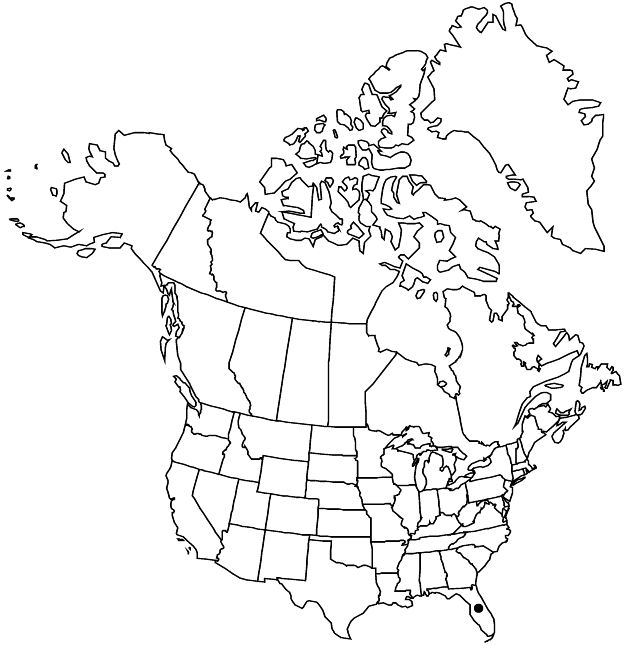Prunus geniculata
Torreya 11: 67. 1911.
Shrubs, sometimes suckering, much branched, 5–10 (–20) dm, thorny. Twigs with axillary end buds, hairy. Leaves deciduous; petiole 3–6 mm, hairy on adaxial surface, sometimes glandular distally, glands 1–2, discoid; blade elliptic, 0.8–2.5 × 0.4–1.3 cm, base obtuse to rounded, margins crenulate-serrulate in distal 1/2, nearly entire on smaller leaves, teeth blunt, glandular, apex obtuse to rounded, mucronate, surfaces glabrous. Inflorescences solitary flowers. Pedicels 0–3 mm, glabrous. Flowers usually bisexual with some staminate flowers on same plant, blooming before leaf emergence; hypanthium campanulate, 2–3 mm, glabrous externally; sepals erect to spreading, ovate, 1–1.5 mm, margins entire, ciliate, abaxial surface glabrous, adaxial hairy; petals white, elliptic, 2 mm; ovaries glabrous. Drupes reddish, ovoid, 12–25 mm, glabrous; mesocarps fleshy; stones ovoid, ± flattened.
Phenology: Flowering Jan–Feb; fruiting Mar–May.
Habitat: Longleaf pine-turkey oak sandhills, pine-evergreen oak scrub
Elevation: 10–50 m
Distribution

Fla.
Discussion
Of conservation concern.
Prunus geniculata is known only from the Lake Wales Ridge in central Florida. Much of its original habitat has been lost to residential, recreational, and agricultural development; it received federal listing as an endangered species in 1987.
Selected References
None.
Lower Taxa
"dm" is not declared as a valid unit of measurement for this property.